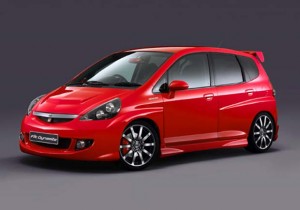
Honda is cutting exports of the Japanese-made Fit to U.S. dealers because of lopsided exchange rates.
Crushed by lopsided dollar/yen exchange rates, Honda is cutting back on exports from Japan to the U.S., even though that will curb potential sales and market share growth, the maker’s CEO says.
The maker hopes to offset those reductions by ramping up production in the U.S. and other parts of North America. Honda recently broke ground in Mexico for a new plant that will supply American dealers with the subcompact Fit and possibly other products.
“Under the current exchange rate of 80 yen per dollar, our export business doesn’t make any profit,” Honda Motor Co. CEO Fumihiko Ike told the trade publication Automotive News. “Definitely, the absolute number of exports to the United States will be decreasing.”
Honda is by no means the only Japanese maker to curb exports to the U.S. as a result of the weak dollar. And European makers, including BMW and Audi, have also curtailed exports due to lopsided exchange rates – though with the Euro sliding the gap has narrowed in recent weeks for German and other Continental manufacturers.
The dollar/yen problem has already led Honda and other Japanese makers to start shifting more production abroad – a move that only gained more urgency in the wake of last year’s earthquake and tsunami, which led to a shortage of parts and a sharp reduction in Japanese production.
Honda, the first Japanese maker to set up a “transplant” assembly line in the U.S. three decades ago, now produces about 90% of the products sold in the U.S. somewhere in the NAFTA region. And the Mexican plant will boost that figure even higher.
The biggest problem for Honda is that it still depends on Japanese plants for its high-profile hybrid models. But production of those vehicles will also be transferred to somewhere in North America, according to Ike, “within a few years.”
Plans also call for an increase in the production of Acura models within North America, Honda officials tell TheDetroitBureau.com.
Honda says it does not plan to eliminate all Japanese exports to the U.S. because it needs to continue stocking dealer lots and it doesn’t want to walk away from key segments such as the subcompact niche covered by the Fit. Abandoning that segment entirely would make it doubly difficult to rebuild share once the new Mexican plant goes into operation.
